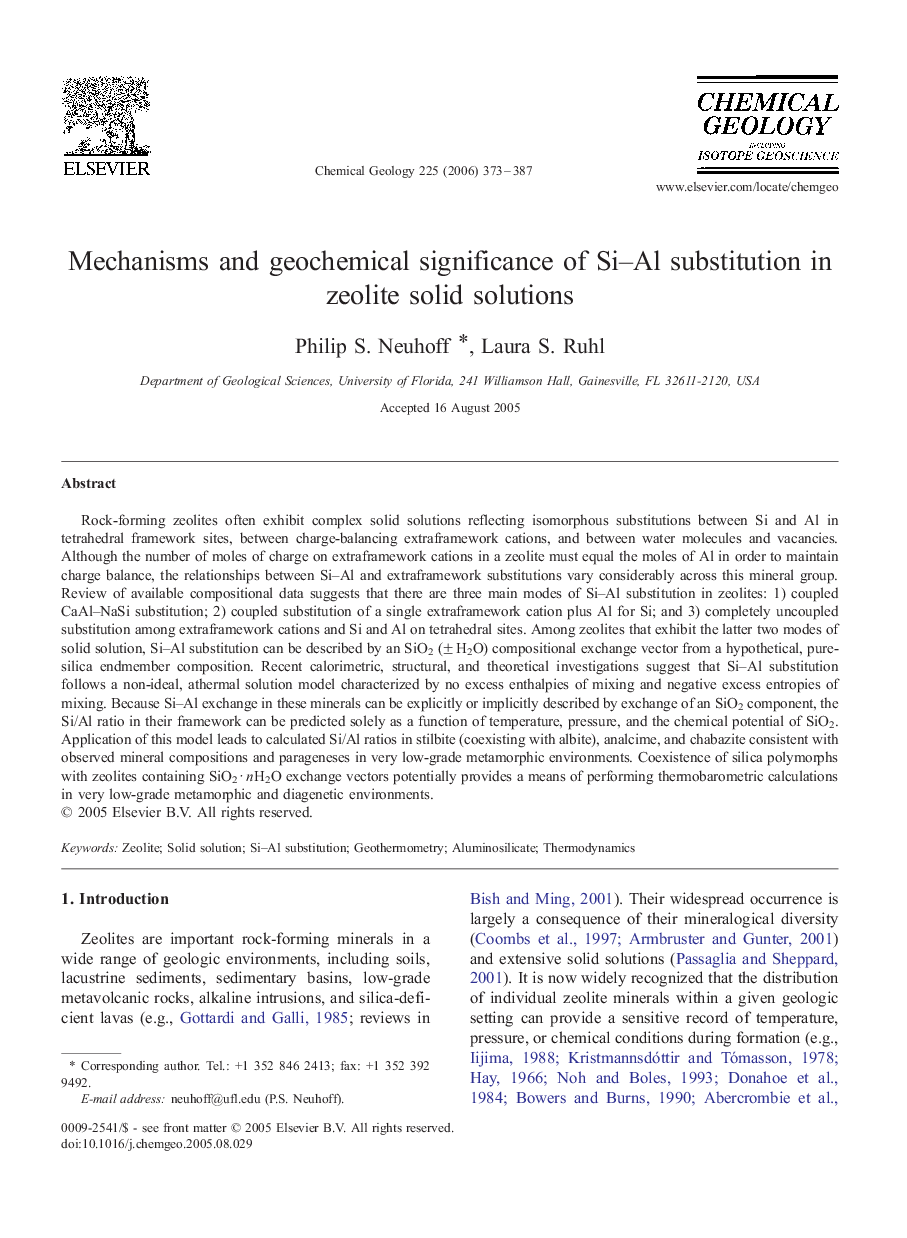| Article ID | Journal | Published Year | Pages | File Type |
|---|---|---|---|---|
| 4701306 | Chemical Geology | 2006 | 15 Pages |
Rock-forming zeolites often exhibit complex solid solutions reflecting isomorphous substitutions between Si and Al in tetrahedral framework sites, between charge-balancing extraframework cations, and between water molecules and vacancies. Although the number of moles of charge on extraframework cations in a zeolite must equal the moles of Al in order to maintain charge balance, the relationships between Si–Al and extraframework substitutions vary considerably across this mineral group. Review of available compositional data suggests that there are three main modes of Si–Al substitution in zeolites: 1) coupled CaAl–NaSi substitution; 2) coupled substitution of a single extraframework cation plus Al for Si; and 3) completely uncoupled substitution among extraframework cations and Si and Al on tetrahedral sites. Among zeolites that exhibit the latter two modes of solid solution, Si–Al substitution can be described by an SiO2 (± H2O) compositional exchange vector from a hypothetical, pure-silica endmember composition. Recent calorimetric, structural, and theoretical investigations suggest that Si–Al substitution follows a non-ideal, athermal solution model characterized by no excess enthalpies of mixing and negative excess entropies of mixing. Because Si–Al exchange in these minerals can be explicitly or implicitly described by exchange of an SiO2 component, the Si/Al ratio in their framework can be predicted solely as a function of temperature, pressure, and the chemical potential of SiO2. Application of this model leads to calculated Si/Al ratios in stilbite (coexisting with albite), analcime, and chabazite consistent with observed mineral compositions and parageneses in very low-grade metamorphic environments. Coexistence of silica polymorphs with zeolites containing SiO2·nH2O exchange vectors potentially provides a means of performing thermobarometric calculations in very low-grade metamorphic and diagenetic environments.
